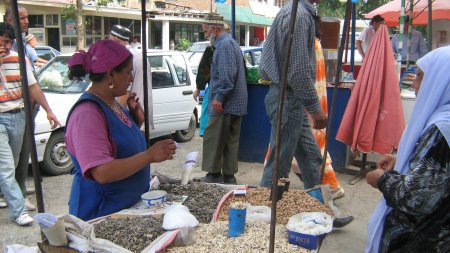
One of the reasons why so many people around the world are not eligible for traditional credit and financial services is because they don’t have any collateral to offer to the lender. However, ironically, collateral alone is often not enough anyway. If you look at traditional borrowers in the U.S., who take out mortgages while putting their house down as a collateral or other loans, the default rates are still quite high (even before the crisis).
So is physical collateral a necessity? Or can credit be given without it?
About 2 Percent
One of the big questions that people have when they first learn about microfinance is – what is the repayment rate? Oftentimes, people are sceptical that the poor actually repay their debt. In general, this can vary from organization to organization, but a 98% repayment rate or higher is typical. In other words, only 2% of the loans or less actually go into default.
So, how can it be that microfinance clients in Tajikistan seem to be more likely to repay their loans that typical borrowers in the U.S.? What measures do MFIs take to keep their portfolio-at-risk numbers low? What can be effective means of collateral when there is nothing physical a client can offer to the lender?
Solidarity Guarantee
One of the most common techniques used by many MFIs to secure their loans is to lend through groups, where every member of the group is responsible for the group’s repayments. In other words, if one borrower fails to repay, the others have to cover for him or her or the entire group suffers.
Why does that work? In part, because the groups do their own, internal analysis to determine who is trustworthy and who they will accept into the group. And secondly, when people have very little, the most important asset they hold is their reputation, so they have an additional interest in repaying their loan to maintain that.

Small, 3-person group. They can range from 3 to 10 people.
One of the credit officers told me a story about a client who was late on her payment. The loan officer went into her village a few times to tell the borrower about the consequences of a late payment. After a few visits, the borrower came into the office to pay up and asked him not to come to the village anymore because she was afraid of what people would think if they’d find out that she was late. Reputation matters.
One step at a time
Solidarity and reputation are important factors, but they are not the only motivators. Many new clients typically start off with small loans at first and need to prove their repayment ability before gaining access to larger amounts and better interest rates. At my MFI, it’s not uncommon to see clients on their 6th, 7th or even 9th loans – each one larger than the previous one.
One client that I’ve met (below), received her first loan for about 1,000 Somoni (300 USD), her 2nd one for 3,000 Somoni (900 USD) and was currently applying for her 5th loan for 5,500 Somoni. In a sense, this is a way for people to build a credit history in places where credit agencies, like Experian and TransUnion in the U.S., do not exist.
Keeping your clients close
A very interesting risk-reducing technique that I observed at my MFI is the monitoring system that the credit officers have in place. For every new client that comes onboard, the loan officers visits them several times right after dispersing the loan to ensure that the loan was used correctly. But, moreover, they follow up with quarterly visits to evaluate the business and ensure that everything is going smoothly. This way, any problems are identified and dealt with early on.
I’d say that this level of attention is pretty unheard of in the United States. After all, when was the last time that the person at your bank visited you after you took out a mortgage or a student loan to see how you’re doing. Even though, the loan sizes here can be 100 smaller than in the West. Although this is a time intensive endeavor, this is one effective strategy to stay on top of your investment.
* This post has been written by Boris Mordkovich, a Kiva Fellow working for 10 weeks in Tajikistan for MLF Humo and Partners. Check out currently fundraising loans by Humo and join Kiva Lending Team – Supporters of Tajikistan *
/>PREVIOUS ARTICLE
Viva Kiva! →NEXT ARTICLE
Bonjour, Bamako: Soro Yiriwaso’s Monument to Sustainability →














